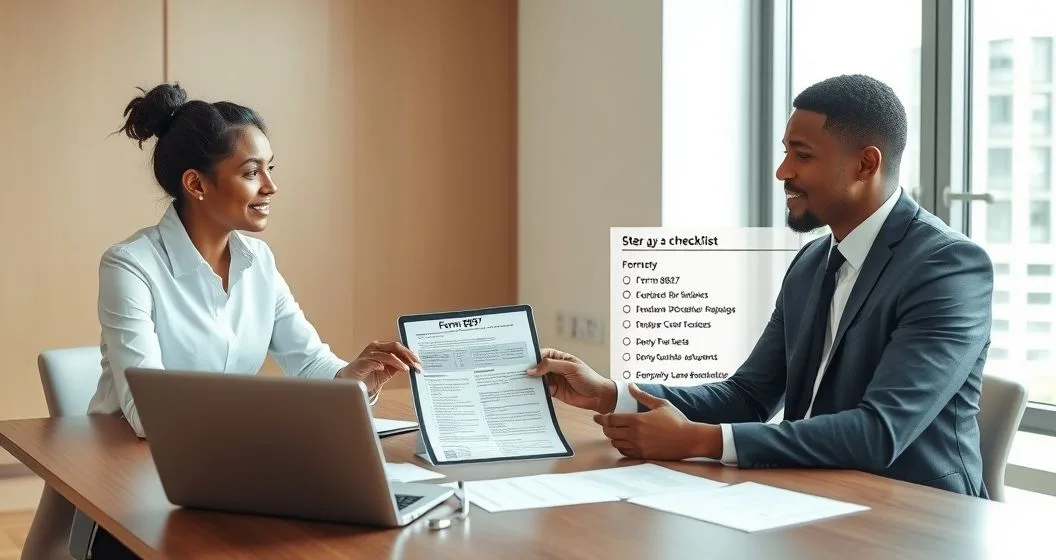Overview
An Innocent Spouse Claim asks the IRS to remove your responsibility for tax, penalties, and interest that resulted from your spouse’s incorrect items on a joint return. The request is made on Form 8857, Request for Innocent Spouse Relief (IRS). This guide gives a practical, evidence-focused roadmap so you can file correctly and quickly find the help you need.
When to consider filing
- You filed a joint return and later got a bill or notice showing additional tax due.
- You did not know, and had no reason to know, about the erroneous items when you signed the return.
- Holding you liable would be unfair (financial hardship, deception, or lack of control over finances).
Step-by-step roadmap
-
Read the IRS overview and confirm Form 8857 is the right form. See the IRS Innocent Spouse Relief page and Publication 971 for rules and definitions (IRS).
-
Collect foundational documents: the joint return in question, IRS notices, bank and credit-card statements, pay stubs, divorce or separation documents, and any proof of your lack of knowledge (emails, bills paid, powers of attorney or lack thereof).
-
Fill out Form 8857 carefully:
- Explain clearly which items you did not know about and why you had no reason to know.
- Attach evidence that supports your statement (see checklist below).
- Specify which type of relief you’re seeking: Innocent Spouse Relief, Separation of Liability, or Equitable Relief. Each has different rules (IRS Form 8857 instructions).
-
File promptly. Generally you must file Form 8857 within two years after the IRS first attempted to collect the tax from you to preserve collection-only relief. Equitable relief can be sought outside that window in some situations, but earlier filing improves results (IRS).
-
Request administrative actions if needed. If collections have already begun, tell the IRS collections officer you’ve filed Form 8857. In many cases, IRS consideration of your request can alter collection steps while the claim is evaluated—confirm specifics with your assigned agent.
-
Keep organized records and a timeline. Note dates you received IRS notices, dates you filed Form 8857, and all follow-up communications. I recommend storing scanned copies in a secure cloud folder and keeping originals for at least seven years.
Documentation checklist (what matters most)
- Signed joint return(s) and the IRS notice that started collections.
- Proof you paid shared household bills (to show you weren’t controlling finances).
- Evidence of your noninvolvement: employment records, paystubs, letters from employers, mortgage or lease agreements, and copies of statements showing you had limited access to accounts.
- Divorce, separation, or protective-order documents if they explain lack of access or deception.
- Communications (texts, emails) that support your timeline or show deception or concealment.
Notes from practice
In my practice, clear, dated documentary evidence is the single strongest factor in convincing an IRS examiner that you lacked knowledge. Short, factual narrative statements on Form 8857 that point to specific documents work better than long, emotional accounts.
Typical timeline and expectations
- IRS processing times vary; many cases are resolved in 6–12 months, but complex matters take longer.
- The IRS will notify you in writing of its determination and explain any change to the liability.
- If relief is denied, you have appeal rights (follow the denial letter for steps and deadlines).
Common mistakes to avoid
- Waiting to file: delays can forfeit collection relief opportunities.
- Weak or missing documentation: assertions without evidence are often denied.
- Confusing Injured Spouse relief (Form 8379) with Innocent Spouse relief — they address different problems (see internal link below).
Interlinks (helpful FinHelp articles)
- For a focused evidence checklist: “Claiming Innocent Spouse Relief: Process and Evidence Checklist” — https://finhelp.io/glossary/claiming-innocent-spouse-relief-process-and-evidence-checklist/
- For early decision guidance: “When to Seek Innocent Spouse Relief and How to Start the Process” — https://finhelp.io/glossary/when-to-seek-innocent-spouse-relief-and-how-to-start-the-process/
- To compare remedies: “Form 8379 vs. Innocent Spouse Relief” — https://finhelp.io/glossary/form-8379-vs-innocent-spouse-relief/
Next steps and when to get help
If your case involves complex financial arrangements, possible fraud, or active collections, consult a tax attorney, enrolled agent, or CPA who regularly handles Innocent Spouse claims. If you choose to hire help, provide them with the full document set and a concise timeline so they can draft a targeted Form 8857 narrative.
Sources and legal references
- IRS — Innocent Spouse Relief: https://www.irs.gov/filing/innocent-spouse-relief
- IRS Publication 971 — Innocent Spouse Relief
- Form 8857, Request for Innocent Spouse Relief (IRS)
Professional disclaimer
This article is educational and does not substitute for personalized tax advice. Rules change and facts matter; consult a qualified tax professional about your specific situation.



